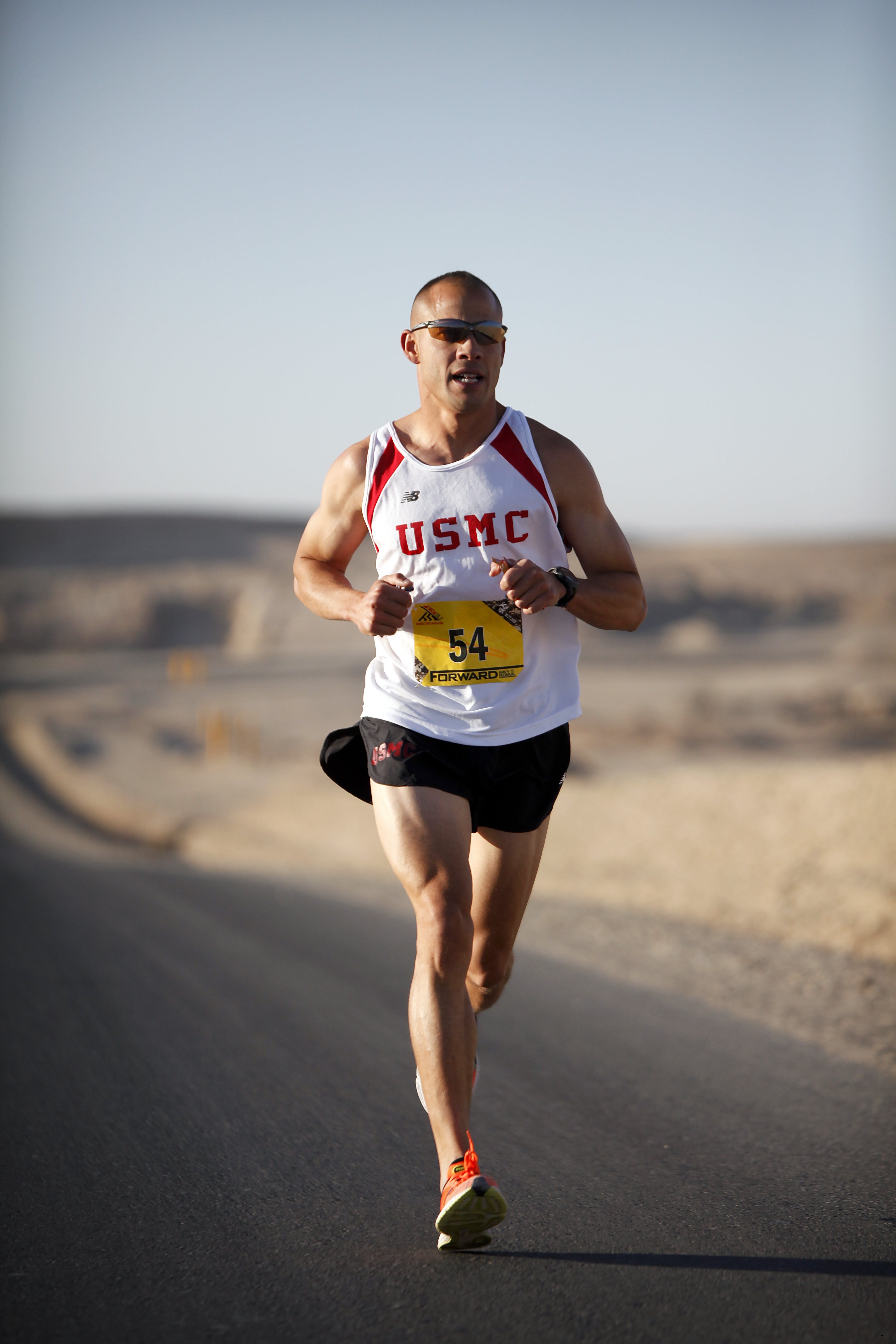Soccer, often dubbed as the “beautiful game,” demands not only skill with the ball but also exceptional physical conditioning. Successful soccer players exhibit a blend of speed, agility, and endurance, all of which are honed through specialized running workouts. By integrating these workouts into your training regimen, you can significantly enhance your on-field performance, ensuring you maintain peak physical condition throughout the match.
Running workouts specifically tailored for soccer players focus on improving the key attributes needed for the game. **_Sprint drills_** help develop explosive speed, allowing players to outrun opponents during critical moments. Meanwhile, _endurance runs_ build the stamina required to sustain high-intensity efforts over the course of a 90-minute match. Additionally, incorporating agility drills ensures quick directional changes, a pivotal skill when maneuvering through tight defensive lines.
Moreover, these workouts are not just about increasing physical parameters but also about reducing the risk of injury. Soccer running workouts condition the body by strengthening muscles and joints, thereby minimizing the chances of common soccer injuries such as hamstrings and ACL tears. By focusing on a well-rounded approach to fitness, players can enjoy the game with fewer interruptions.
If you are looking to elevate your game and understand how running workouts can transform your soccer performance, **_visit our website to learn more_** and get started today! For more details, click here.
Importance of Endurance Training for Soccer

Endurance training stands as a cornerstone in the development of a soccer player’s physical capabilities. Unlike many other sports, soccer requires players to be on the move for extended periods, often covering distances upwards of 10 kilometers in a single match. This level of activity demands a robust cardiovascular system, which is precisely what endurance training seeks to cultivate.
By improving cardiovascular efficiency, endurance training allows players to maintain a high level of performance throughout the entirety of the game. Players with strong endurance can recover more quickly from bouts of intense activity, such as sprints, and are less likely to experience fatigue during crucial moments. This ability to sustain energy levels is often the difference between victory and defeat, particularly in the closing minutes of a match when many games are decided.
Moreover, endurance training enhances the body’s ability to utilize oxygen efficiently, which is crucial for maintaining both speed and agility over the course of the game. Engaging in activities like long-distance running, interval training, and circuit workouts can significantly boost a player’s stamina. These exercises train the heart and lungs to work more effectively, while also strengthening the muscles that are in constant use on the soccer field.
Beyond the physical benefits, endurance training also contributes to mental resilience. Soccer players with high endurance can focus better under pressure, making smarter decisions and executing plays with precision, even when they’re physically taxed. This mental fortitude is an invaluable asset in the high-paced environment of competitive soccer.
Speed and Agility Drills for Soccer Players
In soccer, *speed and agility* are essential attributes that can significantly enhance a player’s effectiveness on the field. These skills not only improve a player’s ability to outrun opponents, but also their capacity to maneuver quickly and efficiently, making them indispensable for every position.
**Speed drills** are designed to enhance a player’s acceleration, top speed, and ability to change pace rapidly. A popular exercise is the “sprint ladder”, where players sprint a short distance, jog back, and then repeat, gradually increasing the distance each time. This drill not only boosts speed but also improves endurance, as players must sustain their effort throughout the exercise.
On the other hand, **agility drills** focus on improving a player’s ability to change direction quickly without losing balance or control. The “cone drill” is a staple for developing agility. Players navigate a series of cones set up in various patterns, such as a zigzag or T-shape, as quickly as possible. This drill mimics the unpredictable movements required during a game, helping players develop better footwork and coordination.
Another effective drill is the “lateral shuffle”, which enhances both agility and lateral movement. In this drill, players shuffle side to side between two points, maintaining low body posture to improve balance and control. This movement is critical during defensive situations or when attempting to evade markers.
Incorporating these drills into a regular training routine can result in noticeable improvements in a player’s speed and agility, allowing them to perform at higher levels and adapt more swiftly to the dynamic nature of soccer matches. These drills not only develop physical attributes but also boost confidence, enabling players to execute plays with greater precision and efficiency.
Interval Training for Enhanced Soccer Performance

To elevate soccer performance, *interval training* is a highly effective method for boosting both endurance and cardiovascular fitness. This form of training involves alternating periods of high-intensity effort with lower-intensity recovery, closely simulating the stop-start nature of a soccer match.
**High-Intensity Interval Training (HIIT)** is particularly beneficial for soccer players. It involves short bursts of intense running followed by brief rest periods. For example, players can sprint at maximum effort for 30 seconds, then walk or jog lightly for 90 seconds. Repeating this cycle for 20-30 minutes can significantly improve a player’s ability to maintain high performance throughout an entire match.
The advantage of interval training lies in its ability to train both the aerobic and anaerobic energy systems. Soccer players require a good aerobic base to endure a full 90-minute game, but they also need anaerobic capacity to perform explosive actions like sprinting, tackling, and jumping. By incorporating both energy systems, players can enhance their overall stamina and resilience.
Another effective interval training approach is the “fartlek” run, which blends continuous training with interval training. During a fartlek session, players vary their speed and intensity throughout a continuous run, incorporating sprints, jogs, and walking. This variation mimics the unpredictable flow of a soccer game, preparing players for different game scenarios.
Interval training not only improves physical fitness but also enhances *mental toughness*. The demanding nature of these workouts pushes players beyond their comfort zones, helping them develop the grit and determination necessary to excel in high-pressure game situations. By making interval training a regular part of their fitness regimen, players can achieve superior performance levels and gain a competitive edge on the field.
Incorporating Hill Sprints for Power

For soccer players aiming to enhance their explosive power and leg strength, *hill sprints* are an exceptional addition to their training regimen. This form of exercise leverages the natural resistance of an incline, demanding greater effort and muscle engagement compared to flat-ground sprints.
**Hill sprints** focus on building the lower body muscles crucial for soccer, such as the quadriceps, hamstrings, calves, and glutes. These muscles are essential for powerful movements like sprinting, jumping, and quick directional changes on the field. By regularly performing hill sprints, players can increase their stride power and speed, directly translating to improved performance during matches.
To incorporate hill sprints effectively, players should begin with a thorough warm-up to prepare their muscles and joints. Start with a gentle jog to the base of the hill, followed by dynamic stretches focusing on the legs. Once warmed up, players can perform 6-10 sprints up the hill, maintaining maximum effort with a focus on form and explosiveness.
During hill sprints, it is crucial to maintain proper technique: keep the upper body slightly leaning forward, drive the knees high, and pump the arms vigorously. These actions help generate momentum and maintain balance on the incline, maximizing the benefits of the exercise. After each sprint, players should walk back down to the starting point, using the descent as a recovery period.
In addition to physical benefits, hill sprints also contribute to *mental fortitude*. The challenging nature of the exercise requires players to push through discomfort, fostering resilience and determination. By integrating hill sprints into their training routine, soccer players can develop the power and mental toughness needed to excel in high-intensity game situations.
Recovery Tips for Soccer Athletes

After intense running workouts, ensuring proper recovery is essential for soccer athletes to maintain peak performance and minimize the risk of injury. Recovery strategies should be integrated into every athlete’s routine to aid muscle repair, reduce soreness, and prepare the body for subsequent training sessions.
**Hydration** is a fundamental aspect of recovery. After a strenuous workout, replenishing fluids lost through sweat is crucial. Athletes should aim to drink plenty of water or electrolyte-rich beverages to restore their body’s balance and support cellular functions.
Another key recovery tip is incorporating a balanced diet rich in *proteins and carbohydrates*. Proteins help repair and build muscle tissue, while carbohydrates replenish glycogen stores depleted during exercise. Including foods like lean meats, fish, whole grains, and fruits can enhance recovery and energy levels.
**Stretching and foam rolling** are also vital practices. Performing static stretches post-workout helps improve flexibility and reduce muscle tightness. Foam rolling, on the other hand, can alleviate muscle knots and enhance blood flow, facilitating quicker recovery.
Lastly, sufficient **rest and sleep** cannot be overstated. Quality sleep is when the body undergoes most of its repair and growth. Athletes should aim for 7-9 hours of sleep per night to optimize recovery processes, support cognitive function, and maintain overall well-being.
By integrating these recovery tips, soccer athletes can sustain their performance levels and reduce injury risks. To explore more about enhancing your fitness routine and to dive deeper into running workouts, visit our website. Get started today!


